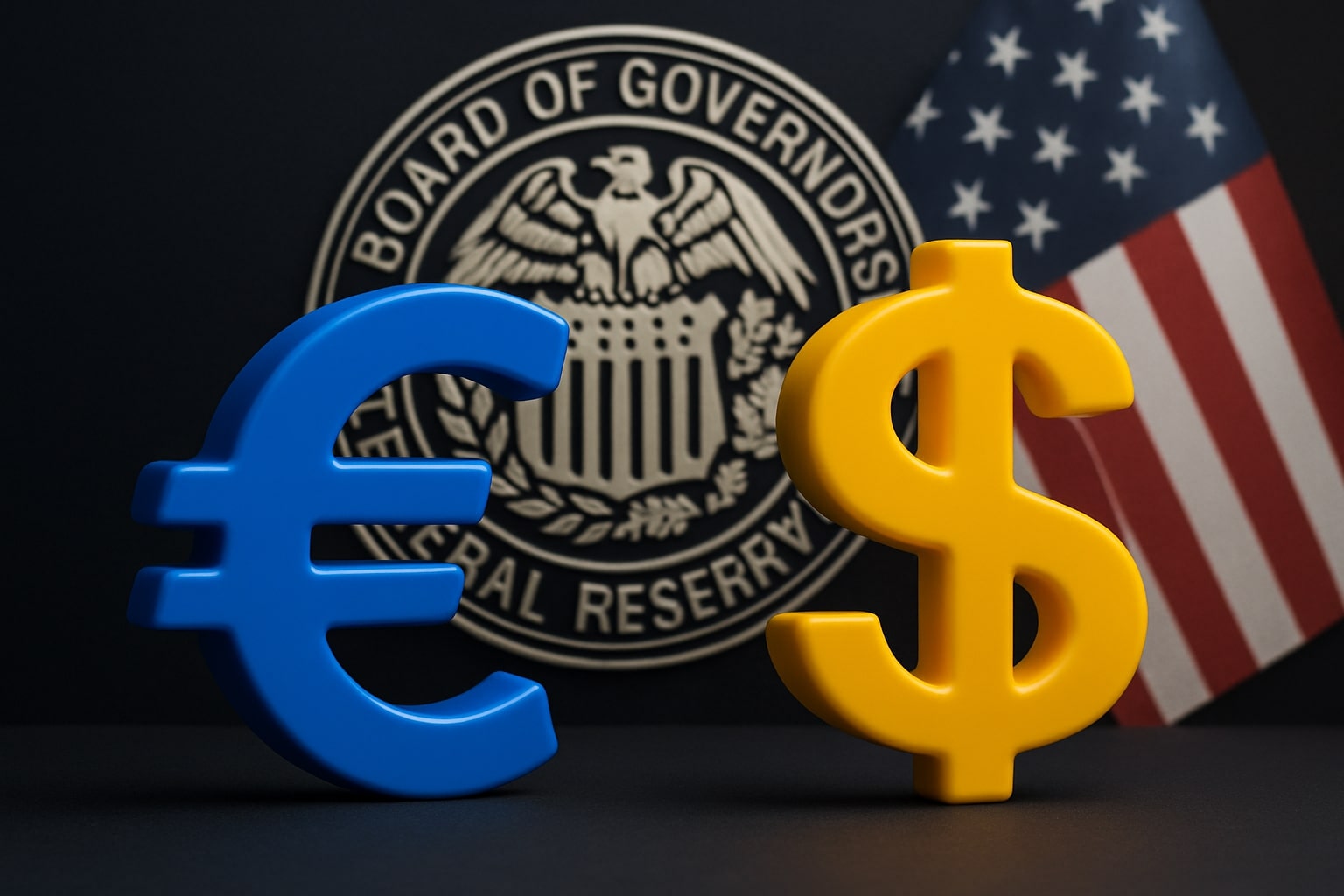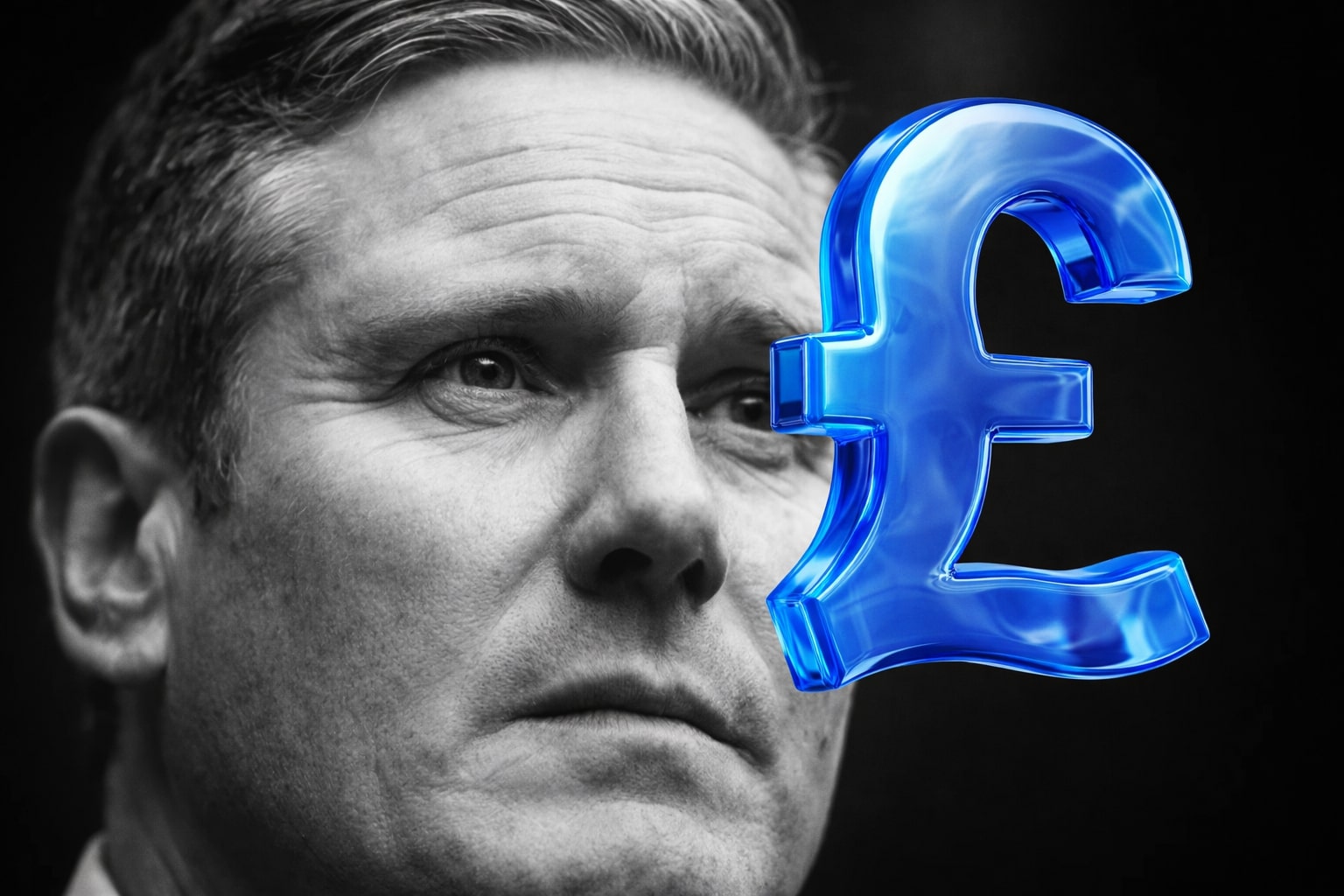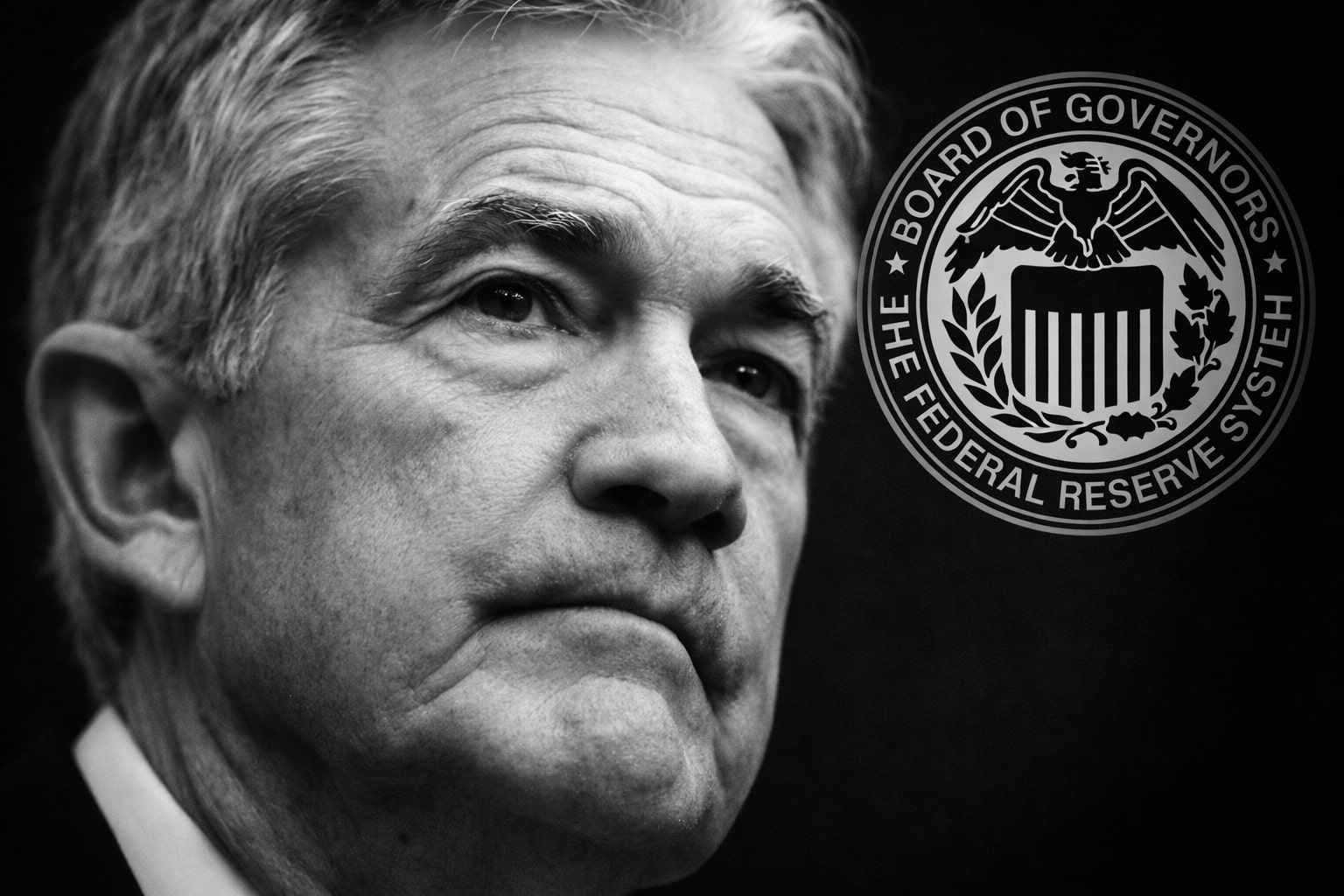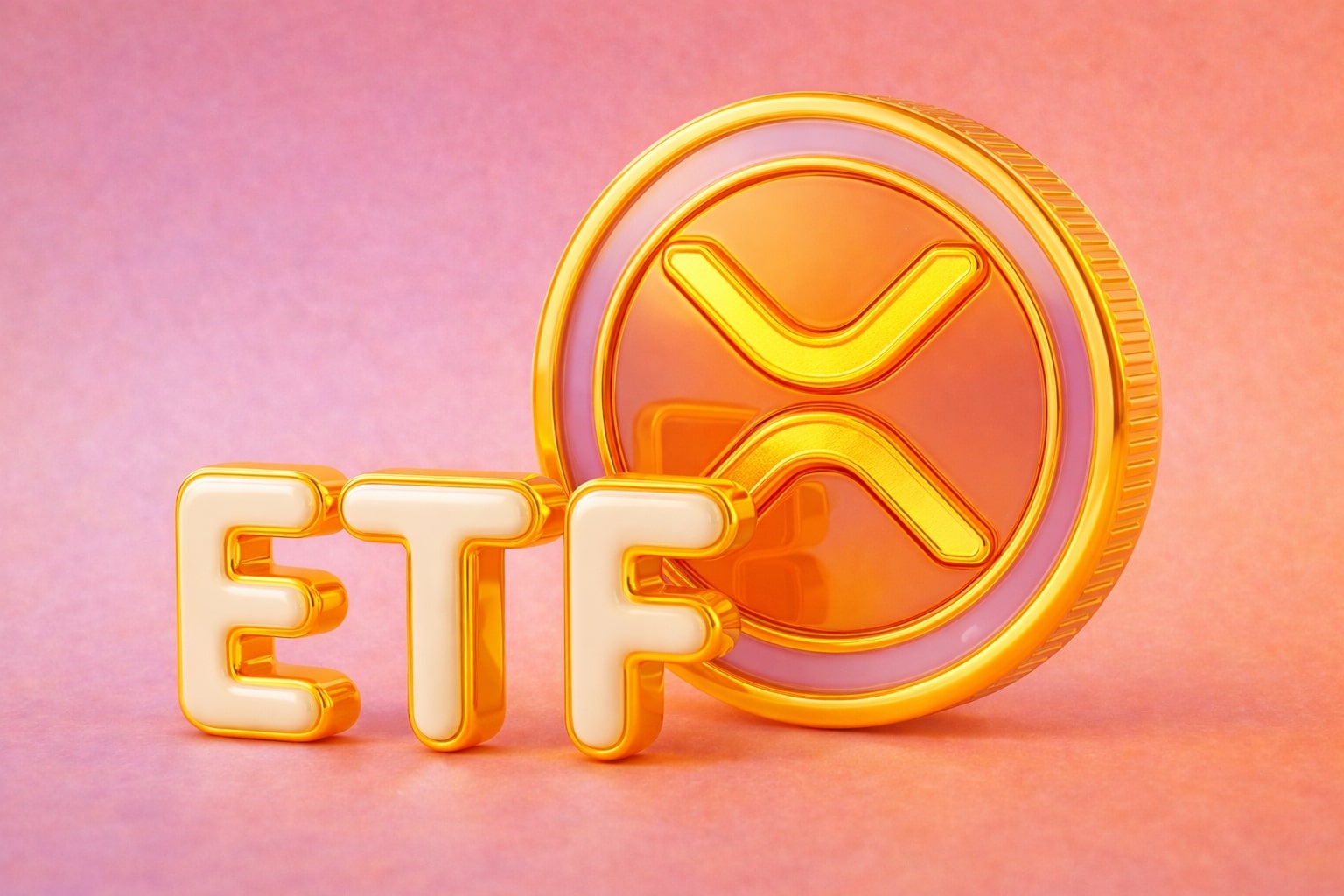EUR/USD Hovering Near 1.17 as Fed Policy Shifts Dominate
The euro-dollar exchange rate has closed August near 1.1696, consolidating against the backdrop of U.S. inflation data and dovish Federal Reserve expectations. The pair tested the upper edge of its recent range around 1.17 but failed to sustain a breakout, sliding back toward 1.1660. The failure to decisively clear resistance highlights the fragile sentiment, with the 1.1720 zone acting as the immediate ceiling and 1.1620–1.1600 emerging as critical support. The wider context shows investors positioning for Fed rate cuts while the euro benefits from supportive German-U.S. yield spreads, leaving EUR/USD caught between conflicting forces.
Fed Inflation Gauge and September Rate Cut Bets
July’s PCE inflation index rose 2.6% YoY and 0.3% MoM, with the Fed’s preferred core measure running at 2.9%, in line with forecasts. These readings preserved market expectations of a September rate cut, with futures pricing reflecting 85% odds of a 25bps reduction. Fed Governor Christopher Waller explicitly endorsed easing, noting he could support a larger 50bps cut if labor market data weakens further. Traders will focus intensely on next week’s nonfarm payrolls after unemployment expectations rose in sentiment surveys. The policy divergence between a Fed leaning dovish and an ECB still cautious on inflation creates room for EUR/USD upside toward 1.1800, provided the pair clears resistance.
Technical Landscape for EUR/USD
Charts show a heavy rejection at 1.1720, where descending resistance from earlier highs converges. Short-term support at 1.1640 has been breached intraday, with markets eyeing 1.1560 as the next downside test if pressure builds. Momentum indicators lean bearish: RSI readings are slipping, and sellers are defending each bounce. However, on the broader weekly chart, EUR/USD remains above the confluence zone at 1.1580, tied to March’s trendline support. Holding that zone is vital; otherwise, the path opens toward 1.1500. On the upside, a confirmed break above 1.1720–1.1740 would open targets at 1.1790 and the July high near 1.1810, which remains unfinished business for the bulls.
Eurozone vs U.S. Fundamentals Shaping the Cross
The Eurozone still contends with sluggish growth, while the U.S. economy printed a surprise +3.3% GDP QoQ revision, showing resilience. Yet, consumer sentiment in the U.S. has weakened sharply, with University of Michigan surveys showing job-loss fears hitting recession-like levels. Auto and housing demand are sliding, and Case-Shiller data shows four straight months of home-price declines. These cracks in the U.S. outlook undermine dollar strength despite higher GDP, giving the euro breathing room. The 2Y German-U.S. spread approaching March highs underscores the euro’s relative rate support. The ECB, however, remains wary of cutting prematurely given sticky inflation near 3.5% for 5-year expectations. This policy gap is the central tug-of-war on EUR/USD pricing.
Fed Independence and Political Risk Factor
Adding another layer of volatility, President Trump’s aggressive stance against Fed governors is weighing on confidence in U.S. monetary policy independence. The attempt to remove Governor Lisa Cook and warnings from former officials like Lael Brainard raise fears that the FOMC could be reshaped politically. Markets interpret this as a guarantee of looser policy ahead, damaging the dollar’s credibility and providing longer-term support for the euro. Analysts argue that the politicization of the Fed, combined with upcoming U.S. elections, reinforces a bearish medium-term case for the dollar, potentially lifting EUR/USD beyond 1.20 in coming quarters.
Dollar Index Breakdown and Implications for EUR/USD
The DXY has slipped below its August trendline, settling under 97.70 support for the first time in months. If the dollar index breaks further toward 96.70, EUR/USD could benefit from the spillover, with upside targets stretching toward 1.1800–1.1916. That projection aligns with the 100% Fibonacci expansion from the 0.9534 lows in 2022. A sustained break of 1.1916–1.2019 would confirm a long-term bullish reversal in EUR/USD, with the 61.8% retracement level at 1.3554 representing the extended horizon. However, traders warn that any surprise hawkish shift in upcoming CPI or PPI reports could delay euro gains.
Investor Positioning and Market Psychology
Sentiment around EUR/USD remains split. Bulls highlight the euro’s resilience above 1.16 despite U.S. data strength, arguing that capital rotation into European assets will continue if the Fed cuts. Bears point to the failure at 1.1720, warning that each bounce has lost momentum since the 1.1829 peak. Investor psychology mirrors this tug-of-war, with speculative accounts trimming longs while real-money funds maintain euro demand. Positioning data shows leveraged funds modestly net long, but with low conviction, leaving the pair vulnerable to stop-driven volatility around key levels.
Verdict on EUR/USD Price Outlook
All the evidence points to EUR/USD at a decisive junction. Technical charts frame 1.1560–1.1720 as the immediate battlefield, while fundamentals hinge on whether the Fed follows through with cuts in September. A break above 1.1720 would likely accelerate toward 1.1800–1.1810, while a failure risks dragging the pair back toward 1.1500. With policy divergence, fragile U.S. data, and political uncertainty undermining the dollar, the balance of risks leans bullish. Based on the data, EUR/USD earns a Buy rating, with accumulation favored above 1.1600 for a medium-term move targeting 1.18–1.20.




















